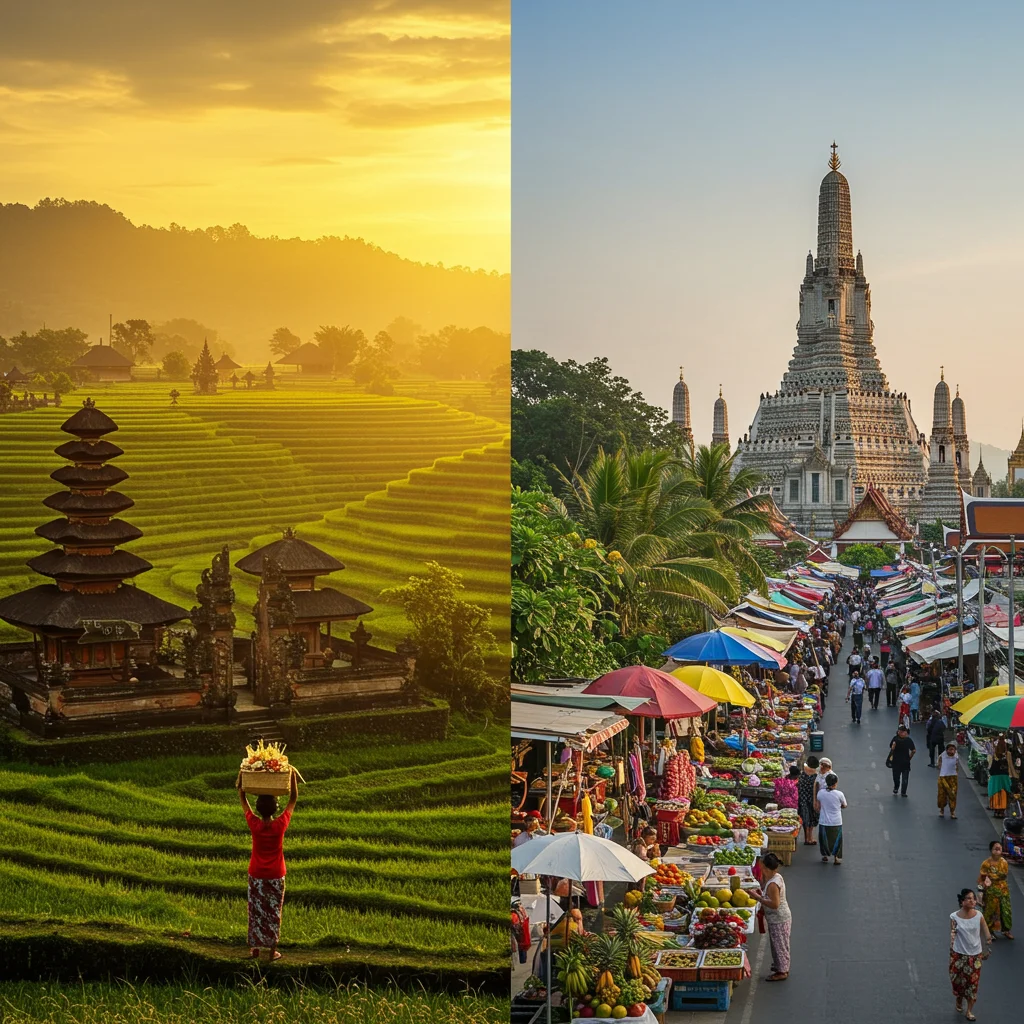Introduction: Bali vs Thailand – Which Destination is Right for You?
Choosing between Bali and Thailand can feel like a challenge for travelers seeking exotic landscapes, rich culture, and unforgettable experiences. Both destinations offer vibrant atmospheres, but each has its own unique flavor, traditions, and travel opportunities. In this comprehensive guide, we will help you make an informed decision based on your travel style, preferences, and expectations.
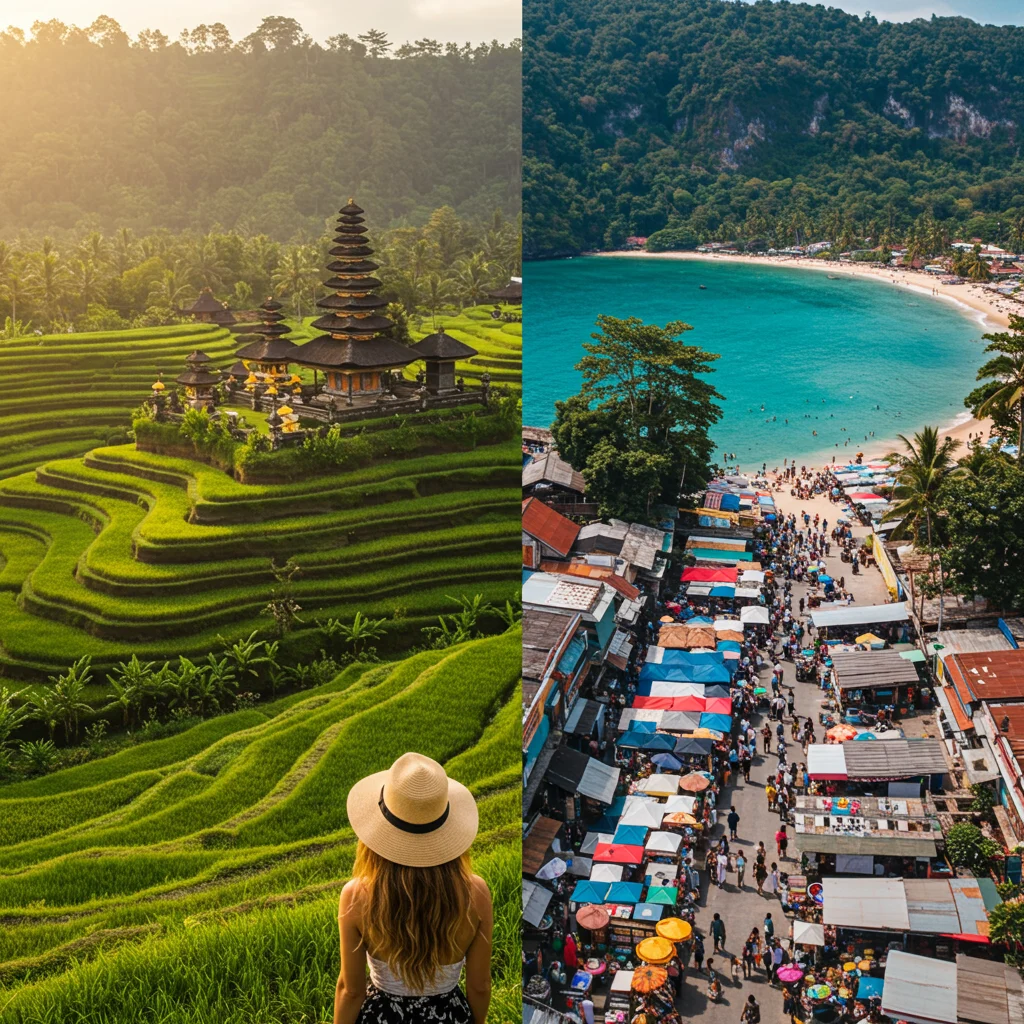
Overview of Bali and Thailand
Bali, an island province of Indonesia, is renowned for its lush rice terraces, dramatic coastlines, and spiritual ambiance. Thailand, on the other hand, is a diverse country stretching from the mountainous north to tropical southern islands, known for its bustling cities, historic temples, and culinary delights.

Both destinations draw millions of visitors each year, offering everything from luxury resorts to backpacker-friendly hostels, world-class cuisine, and endless adventure.
Why Compare Bali and Thailand?
Travelers often find themselves torn between Bali and Thailand because both promise idyllic beaches, vibrant culture, and affordable prices. However, the experiences in each are distinct, from the spiritual serenity of Bali’s temples to Thailand’s bustling markets and nightlife. Comparing these destinations helps clarify what suits your travel goals—whether it’s relaxation, adventure, culture, or a mix of everything.
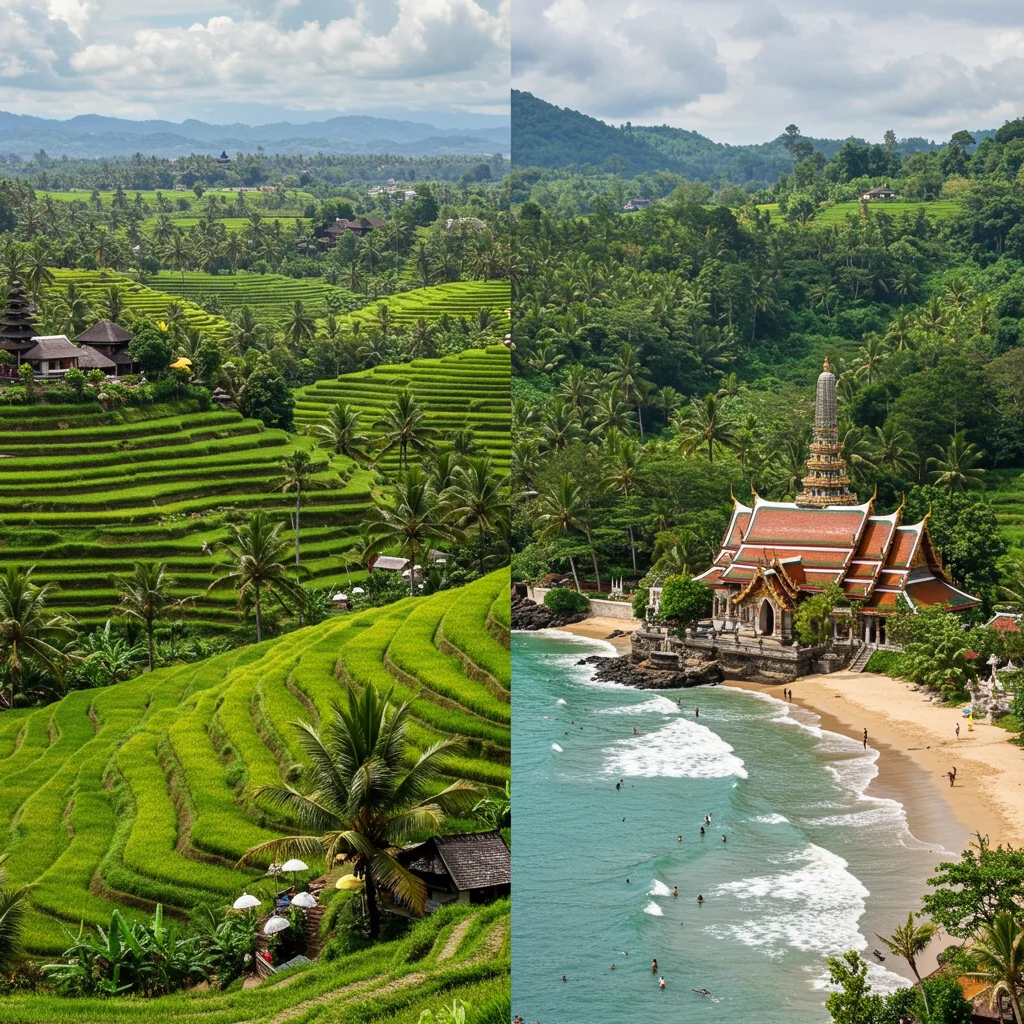
Quick Comparison Table: Bali vs Thailand
Below, we present a concise comparison to highlight the key differences and similarities between Bali and Thailand:
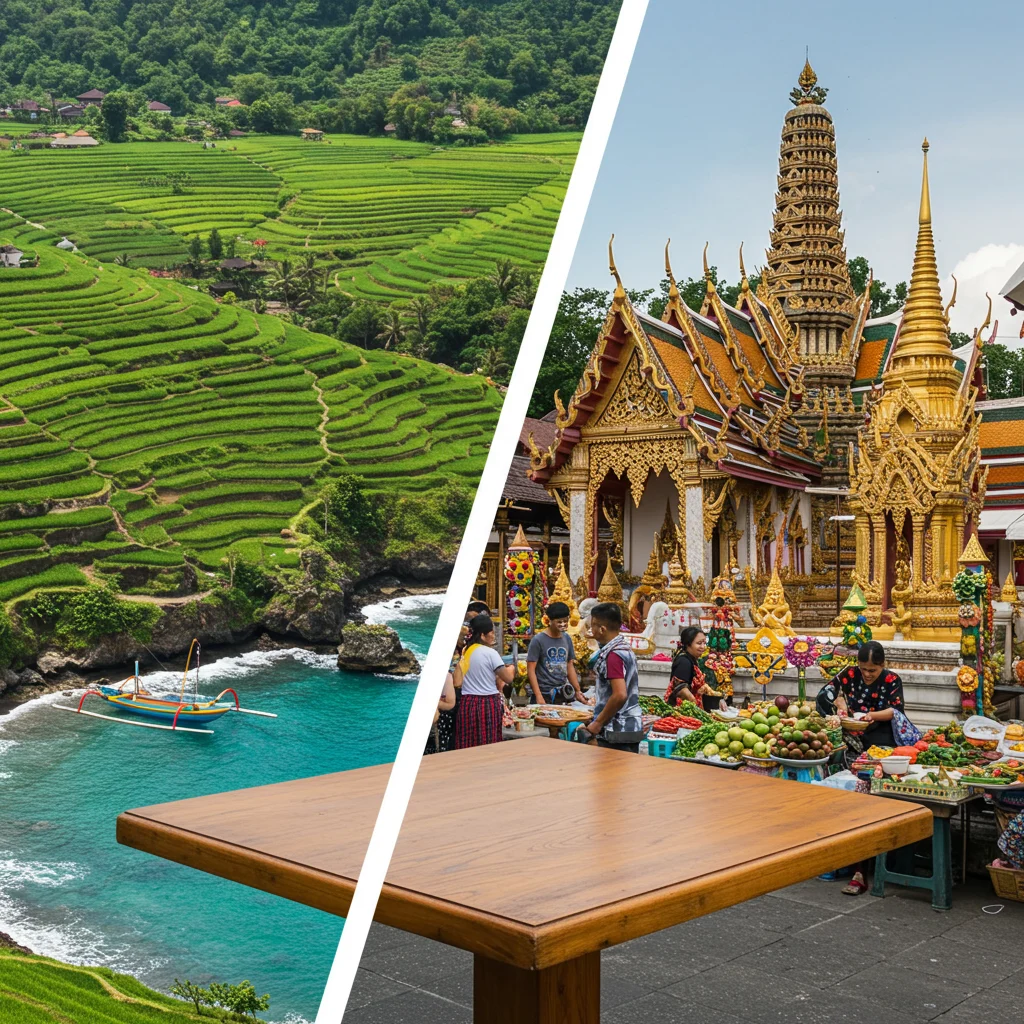
- Location: Bali is a single island in Indonesia; Thailand is a large country in Southeast Asia.
- Best Time to Visit: Bali – April to October; Thailand – November to February.
- Culture: Bali is predominantly Hindu; Thailand is Buddhist.
- Cost: Both are affordable, but Thailand offers more budget options.
- Beaches: Bali has volcanic sand and dramatic surf; Thailand offers powdery white sands and turquoise seas.
Geography and Location
The geographical settings of Bali and Thailand shape their climates, landscapes, and travel logistics. Understanding where each is located can help you plan your trip more effectively.

Where is Bali Located?
Bali is an island situated in the Indonesian archipelago, lying between Java and Lombok. Its central location in the tropics grants it lush scenery, rice paddies, and volcanic mountains.
Where is Thailand Located?
Thailand is located in mainland Southeast Asia, bordered by Myanmar, Laos, Cambodia, and Malaysia. It features a long coastline along the Gulf of Thailand and the Andaman Sea, offering diverse landscapes from urban centers to remote islands.
Climate and Best Time to Visit
Weather plays a crucial role in planning a trip to Bali or Thailand. Both destinations experience tropical climates but with differing rainy seasons and temperature patterns.

Weather Patterns in Bali
Bali has a tropical climate with two main seasons: dry (April to October) and wet (November to March). The dry season is characterized by blue skies, warm breezes, and lower humidity, making it ideal for beach activities and exploring the island’s natural beauty.
Weather Patterns in Thailand
Thailand experiences three distinct seasons: hot, rainy, and cool. The cool season (November to February) brings comfortable temperatures and minimal rain, especially in the northern regions and islands in the Gulf of Thailand.
When Is the Best Time to Visit Bali?
The best time to visit Bali is during the dry season, from April to October. This period offers the most sunshine and is perfect for outdoor adventures, water sports, and sightseeing.
When Is the Best Time to Visit Thailand?
For Thailand, November to February is the most pleasant period, with cooler temperatures and little rainfall. Southern beaches are especially attractive during these months, and major festivals like Loy Krathong add cultural vibrancy.
Culture and Traditions
Both Bali and Thailand are steeped in tradition, but their cultures differ significantly. Understanding these differences can enrich your travel experience and provide deeper insights into local life.
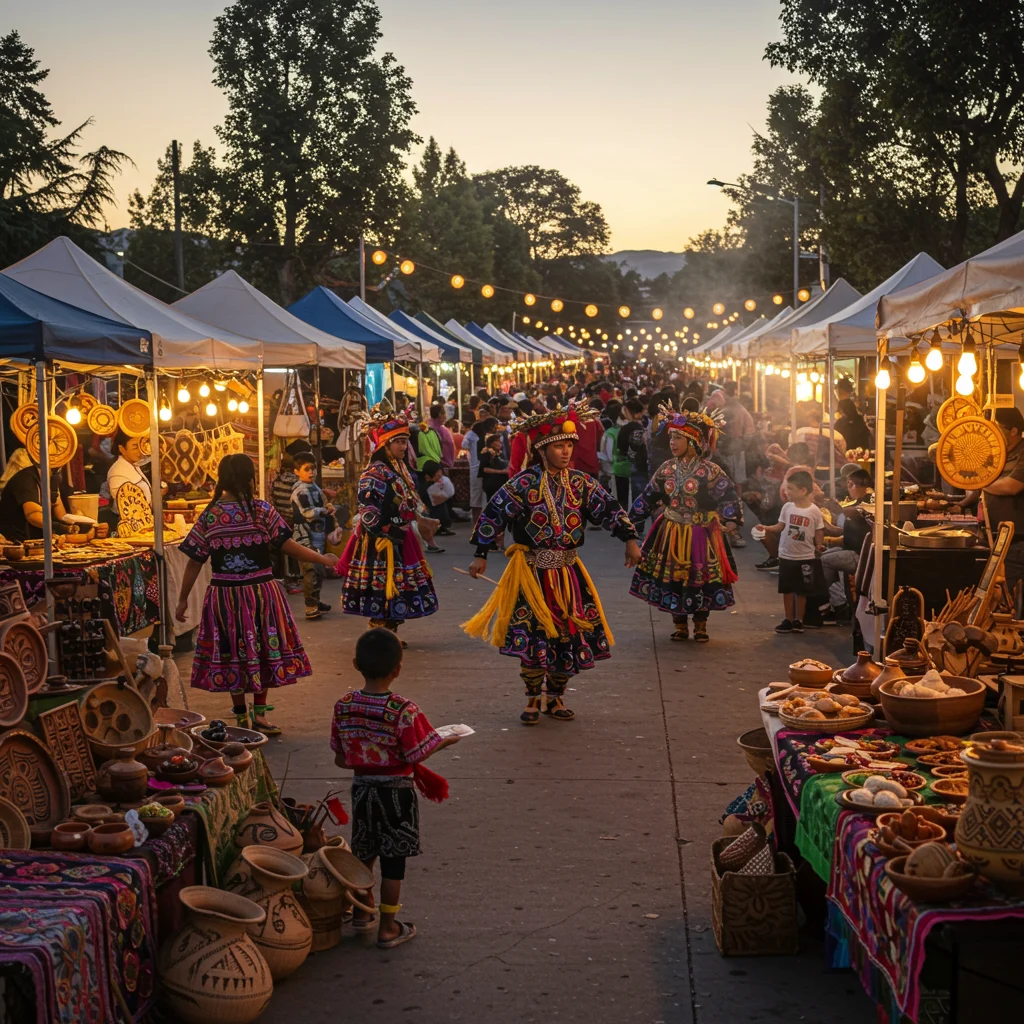
Balinese Culture: What Makes It Unique?
Balinese culture is deeply rooted in Hinduism, visible in daily offerings, intricate temple ceremonies, and vibrant art forms. Dance, music, and spirituality permeate everyday life, creating a serene yet lively atmosphere.
Thai Culture: What Should You Expect?
Thai culture is shaped by Buddhism, hospitality, and a respect for hierarchy. Visitors are often greeted with warm smiles and the traditional “wai” gesture. Temples, festivals, and street life reflect the country’s dynamic spirit.
Festivals and Events in Bali
Bali hosts numerous festivals throughout the year, such as Nyepi (Day of Silence), Galungan, and the Bali Arts Festival. These events showcase traditional music, dance, and rituals, offering immersive experiences for travelers.
Festivals and Events in Thailand
In Thailand, festivals like Songkran (Thai New Year), Loy Krathong, and Yi Peng fill the air with excitement. Streets come alive with water fights, floating lanterns, and cultural performances, making these periods particularly memorable for visitors.
Language and Communication
Effective communication enhances any journey. While both destinations cater to international tourists, language barriers may arise, so it is helpful to know what to expect and prepare accordingly.

Is English Widely Spoken in Bali?
English is commonly spoken in Bali’s main tourist areas, hotels, and restaurants. In rural villages, Bahasa Indonesia and Balinese are predominant, but basic English is often understood.
Is English Widely Spoken in Thailand?
In Thailand, English is widely spoken in major cities, tourist hotspots, and hospitality venues. However, in smaller towns and remote regions, communication may require patience and some creativity.
Essential Phrases for Travelers
Learning a few local phrases can enhance interactions and show respect for the culture. Here are some useful expressions:
- Bali (Bahasa Indonesia): “Terima kasih” (Thank you), “Tolong” (Please), “Selamat pagi” (Good morning)
- Thailand (Thai): “Sawasdee” (Hello), “Khop khun” (Thank you), “Chai” (Yes), “Mai” (No)
Visa Requirements and Entry Rules
Entry requirements can impact your travel planning. Both Bali and Thailand offer visa-free or visa-on-arrival options for many nationalities, but it is important to review the latest regulations before departure.
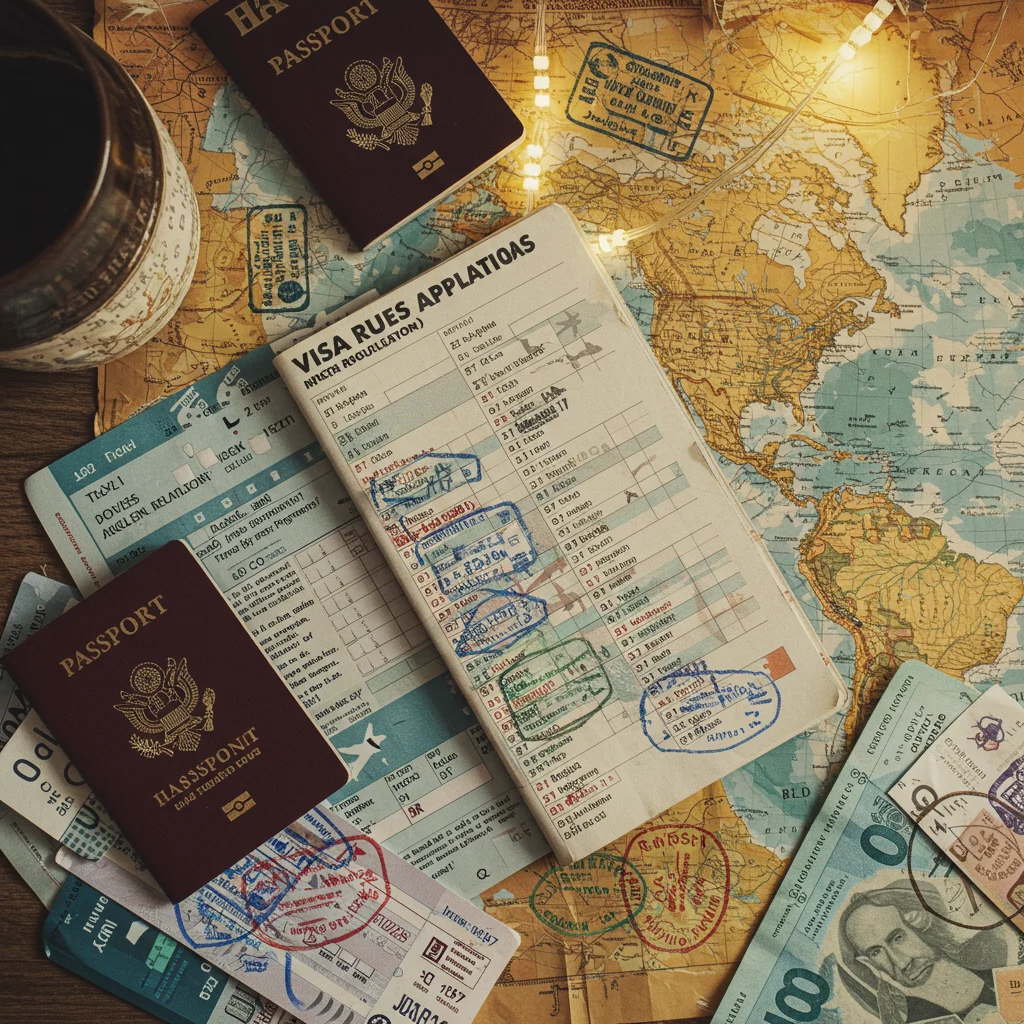
Visa Policies for Bali (Indonesia)
Most travelers can enter Bali with a 30-day visa on arrival, extendable for an additional 30 days. Some countries are eligible for visa-free entry, while others must apply in advance. Always check current policies with your local Indonesian embassy.
Visa Policies for Thailand
Thailand provides visa exemption for citizens of over 60 countries for stays up to 30 days. Extensions are possible at immigration offices. Longer stays or specific purposes may require a tourist or special visa.
COVID-19 Travel Updates
Entry rules may change due to public health concerns. Both destinations periodically update COVID-19 requirements, including vaccination, testing, and insurance. Confirm the latest information before booking your trip.
Getting There: Flights and Accessibility
Accessibility plays a significant role in choosing between Bali and Thailand. Both are well connected to major international hubs, but logistics differ depending on your point of origin.
Major Airports in Bali
Ngurah Rai International Airport (Denpasar) is Bali’s main gateway, serving direct flights from Australia, Southeast Asia, and the Middle East. The airport is located close to popular areas like Kuta, Seminyak, and Ubud.
Major Airports in Thailand
Thailand boasts several international airports, including Suvarnabhumi and Don Mueang in Bangkok, Phuket International Airport, and Chiang Mai International Airport. This network offers flexibility when planning multi-city itineraries.
Direct Flights and Connectivity
Both destinations are accessible via direct flights from major cities in Asia, Australia, and beyond. Thailand’s larger size and multiple airports provide more options for internal connections and regional travel.
Cost of Travel: Which Is More Affordable?
Budget is a deciding factor for many travelers. While both Bali and Thailand are known for their affordability, costs can vary based on travel style, accommodation, and activities.

Average Daily Budget in Bali
Travelers in Bali can expect to spend between $30 and $100 per day, depending on accommodation, meals, and transportation. Budget travelers may find dorm beds and warung meals for less, while luxury seekers have ample high-end choices.
Average Daily Budget in Thailand
Thailand offers an even wider range, with backpackers managing on $25 to $70 per day. Street food, affordable guesthouses, and efficient public transport help stretch your budget.
Cost of Accommodation
Both destinations feature options from simple hostels to five-star resorts. In Bali, unique stays like treehouses and private villas are popular—see our ultimate travel guide to Bali treehouses for inspiration. In Thailand, beach bungalows, boutique hotels, and luxury resorts are widely available, especially in major tourist areas.
Food and Drink Prices
Eating out is affordable in both destinations. Bali warungs offer meals for $2–$5, while upscale restaurants may charge $15–$30. In Thailand, street food can be enjoyed for as little as $1, with more elaborate meals priced modestly.
Transport Costs
Transportation in Bali often involves renting scooters or hiring drivers. In Thailand, public transport is more developed, with buses, trains, tuk-tuks, and budget flights connecting cities and islands.
Currency and Money Matters
Managing money efficiently is key to a smooth trip. Understanding the local currency, payment options, and tipping practices helps avoid confusion and unnecessary fees.
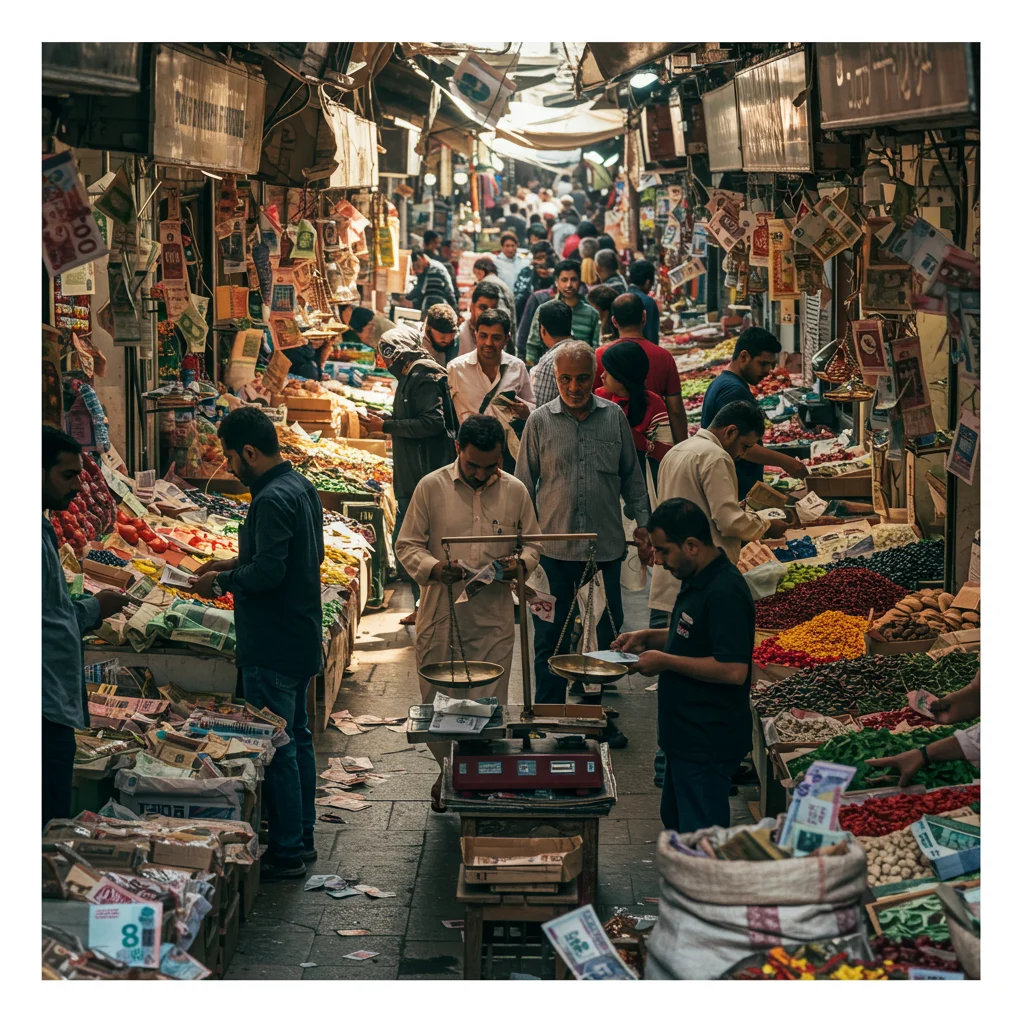
Currency in Bali
The official currency in Bali is the Indonesian Rupiah (IDR). Cash is widely used, especially in markets and small businesses.
Currency in Thailand
Thailand uses the Thai Baht (THB). Both cash and cards are accepted in urban areas, but cash is preferred in smaller towns and markets.
ATMs and Credit Card Availability
ATMs are plentiful in both Bali and Thailand, with international cards generally accepted. However, always notify your bank of travel plans and carry some cash for remote areas.
Tipping Culture
Tipping is not mandatory in either destination, but small gratuities are appreciated for good service. In tourist areas, a 5–10% tip is common in restaurants.
Accommodation Options
From luxury resorts to budget hostels, both Bali and Thailand cater to a variety of travelers. Where you choose to stay can shape your overall experience.

Types of Accommodation in Bali
Bali offers boutique hotels, private villas, eco-lodges, and unique stays such as treehouses and bamboo houses. Many travelers enjoy the island’s emphasis on design, privacy, and natural beauty.
Types of Accommodation in Thailand
Thailand provides a vast selection, from beach bungalows and city hotels to mountain lodges and family-run guesthouses. The diversity allows for flexibility in both comfort and cost.
Best Areas to Stay in Bali
Popular areas include Seminyak for nightlife and shopping, Canggu for a laid-back surf scene, and Ubud for culture and wellness. If you are torn between Canggu and Seminyak, our comparison of Canggu and Seminyak may help you decide.
Best Areas to Stay in Thailand
In Thailand, Bangkok offers urban excitement, Chiang Mai provides a relaxed northern vibe, and islands like Phuket and Koh Samui are ideal for beach lovers.
Luxury vs Budget: What Can You Expect?
Both destinations cater to all budgets. Bali is famous for affordable luxury, with private pool villas available at mid-range prices. Thailand impresses with its range, from ultra-budget hostels to opulent resorts with world-class amenities.
Food and Cuisine
Culinary adventures are a highlight of travel in both Bali and Thailand, offering a range of flavors, textures, and aromas that delight the senses.

What Is Balinese Food Like?
Balinese cuisine features aromatic spices, coconut, and rice as staples. Signature dishes like nasi goreng (fried rice), bebek betutu (slow-cooked duck), and sate lilit (spiced minced meat skewers) are must-tries.
What Is Thai Food Like?
Thai food is celebrated for its balance of sweet, sour, salty, and spicy flavors. Dishes such as pad thai, tom yum goong (spicy shrimp soup), and green curry are world-famous for good reason.
Vegetarian and Vegan Options
Both destinations cater to plant-based diets, with an abundance of fresh vegetables, tofu, and coconut-based curries. Bali in particular is known for its health-conscious cafes and vegan-friendly menus.
Street Food Culture
Street food is integral to both cultures. In Bali, night markets offer satays, grilled corn, and sweet treats. Thailand’s street vendors serve up everything from mango sticky rice to spicy noodles, often cooked before your eyes.
Must-Try Dishes in Bali
- Babi Guling (suckling pig)
- Nasi Campur (mixed rice plate)
- Lawar (spiced salad)
Must-Try Dishes in Thailand
- Som Tum (green papaya salad)
- Massaman Curry
- Thai Iced Tea
Nightlife and Entertainment
Evenings in Bali and Thailand can be as lively or as relaxed as you wish, with options ranging from beach parties to traditional performances.

Nightlife in Bali: Clubs, Bars, and Beach Parties
Bali is famous for its beach clubs, rooftop bars, and sunset parties, especially in Seminyak and Canggu. Live music and DJ sets create energetic nights, while quieter venues in Ubud offer cultural shows and jazz.
Nightlife in Thailand: From Bangkok to the Islands
In Thailand, Bangkok’s rooftop bars and nightclubs are legendary, while islands like Koh Phangan host the iconic Full Moon Party. Chiang Mai offers night bazaars and live music in a more laid-back setting.
Safety and Travel Risks
Personal safety and awareness of local risks are essential when traveling. Both Bali and Thailand are generally safe, but it is wise to take standard precautions.

How Safe Is Bali for Tourists?
Bali is considered safe for tourists, with low rates of violent crime. Petty theft can occur, especially in crowded areas, so keep valuables secure and remain vigilant.
How Safe Is Thailand for Tourists?
Thailand maintains a good reputation for tourist safety. Use common sense in busy markets and nightlife districts, and be cautious when using public transport late at night.
Common Scams and How to Avoid Them
Scams targeting tourists exist in both destinations. These may include overpriced taxis, fake tour operators, or rigged currency exchanges. We recommend booking activities through reputable platforms like Viator to avoid disappointment and ensure reliability.
Health and Medical Facilities
Access to quality healthcare is an important consideration, especially for families and long-term travelers. Both Bali and Thailand have modern medical facilities in major cities.

Healthcare in Bali
Bali offers a range of clinics and hospitals, primarily in Denpasar, Kuta, and Ubud. Private hospitals provide international standards of care, but rural areas may have limited facilities.
Healthcare in Thailand
Thailand is known for excellent healthcare, with Bangkok and Chiang Mai hosting internationally accredited hospitals. Medical tourism is popular due to affordable prices and high standards.
Travel Insurance: Is It Essential?
We strongly recommend purchasing comprehensive travel insurance before visiting either destination. Medical emergencies, cancellations, or unexpected incidents can be costly without coverage. For more on this topic, learn more in our guide to travel insurance for Bali or Thailand.
Transportation and Getting Around
Efficient transportation helps make the most of your time abroad. Both Bali and Thailand offer a range of options, but the ease of getting around varies.

Public Transport in Bali
Public transport in Bali is limited. Most visitors rely on private drivers, taxis, or scooter rentals. Ride-hailing apps like Gojek and Grab are also available in urban areas.
Public Transport in Thailand
Thailand boasts extensive public transportation, including buses, trains, tuk-tuks, and metro systems in major cities. Ferries connect the islands, making it easy to move between destinations.
Renting Scooters, Cars, and Bikes
Renting a scooter is a popular way to explore Bali, offering freedom and flexibility. In Thailand, scooters and cars are readily available for rent, but always use helmets and check local driving regulations.
Getting Between Cities and Islands
In Bali, travel between towns is by road, while in Thailand, domestic flights, trains, and ferries facilitate long-distance journeys and island hopping.
Top Attractions and Things to Do
Both Bali and Thailand offer a wealth of attractions, from iconic landmarks to hidden gems. The variety ensures every traveler finds something memorable.

Must-See Sights in Bali
Highlights include Uluwatu Temple, Tegallalang Rice Terraces, and the vibrant beaches of Seminyak and Canggu. For a quieter experience, consider the north—our Lovina Bali things to do bucket list spotlights black sand beaches and dolphin watching.
Must-See Sights in Thailand
In Thailand, the Grand Palace in Bangkok, ancient ruins of Ayutthaya, and the temples of Chiang Mai are must-visits. The Phi Phi Islands and Railay Beach offer postcard-perfect scenery.
Natural Wonders and Landscapes
Bali is famous for volcanic mountains, waterfalls, and lush forests. Thailand features limestone cliffs, tropical islands, and dense jungles, each offering unique photo opportunities.
Adventure Activities
Adventure seekers can surf, dive, hike, and raft in both destinations. Whether it’s climbing Mount Batur at sunrise in Bali or ziplining through the forests of Chiang Mai, adrenaline is never far away.
Beaches: Bali vs Thailand
Beach lovers are spoiled for choice in both locations, but the character of the coastlines differs. From volcanic sands to powdery white beaches, the options are nearly endless.
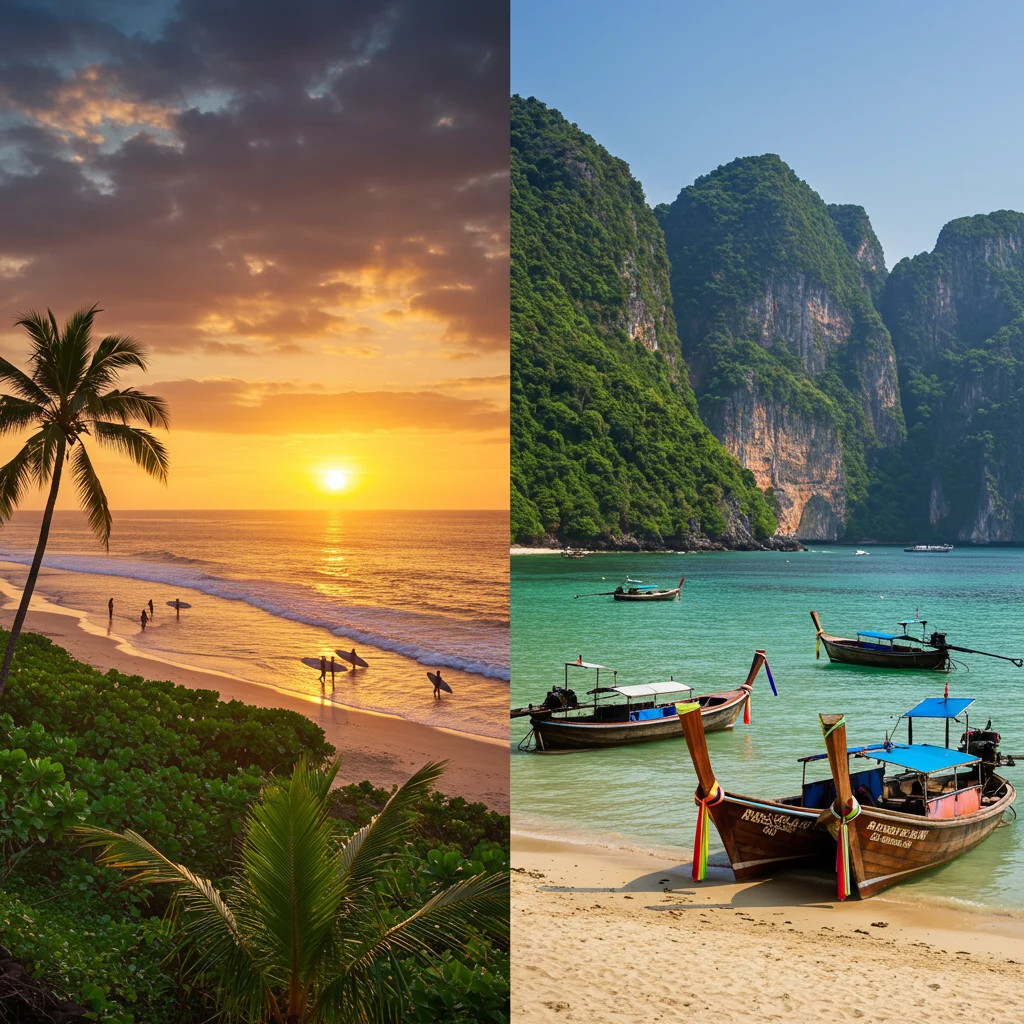
Best Beaches in Bali
Top picks include Kuta for surfing, Seminyak for sunsets, and Nusa Dua for calm waters. For a more secluded atmosphere, visit Lovina or the white sands of Padang Padang.
Best Beaches in Thailand
Thailand’s beaches are renowned for soft sand and turquoise water. Islands like Koh Phi Phi, Koh Tao, and Phuket are consistently ranked among the world’s best. For those considering other Southeast Asian islands, our guide to the best beach in Phu Quoc provides further inspiration.
Snorkeling and Diving Opportunities
Both destinations are excellent for snorkeling and diving. Bali offers shipwrecks and vibrant reefs, while Thailand is celebrated for its marine biodiversity and clear, warm waters.
Surfing: Where Is Better?
Bali is a world-class surfing destination, with consistent waves and surf schools catering to all levels. While Thailand has some surf spots, particularly in the Andaman region, conditions are generally better in Bali.
Nature, Wildlife, and Outdoor Activities
Both destinations offer abundant opportunities to connect with nature, from trekking through jungles to spotting rare wildlife.

National Parks and Wildlife in Bali
Bali is home to Bali Barat National Park and the Sacred Monkey Forest Sanctuary, providing habitats for exotic birds, monkeys, and deer.
National Parks and Wildlife in Thailand
Thailand boasts Khao Sok, Erawan, and Doi Inthanon National Parks, where elephants, gibbons, and hornbills can be observed in their natural environments.
Trekking and Hiking Trails
In Bali, popular hikes include Mount Batur and Campuhan Ridge Walk. Thailand offers multi-day treks in Chiang Mai and jungle adventures in Khao Yai.
Waterfalls and Natural Pools
Both destinations feature stunning waterfalls. Bali’s Tegenungan and Sekumpul Falls are favorites, while Thailand’s Erawan and Huay Kaew Falls attract nature lovers year-round.
Cultural and Spiritual Experiences
Cultural immersion is a highlight of travel, with both Bali and Thailand offering opportunities to visit sacred sites, participate in rituals, and rejuvenate the mind and body.
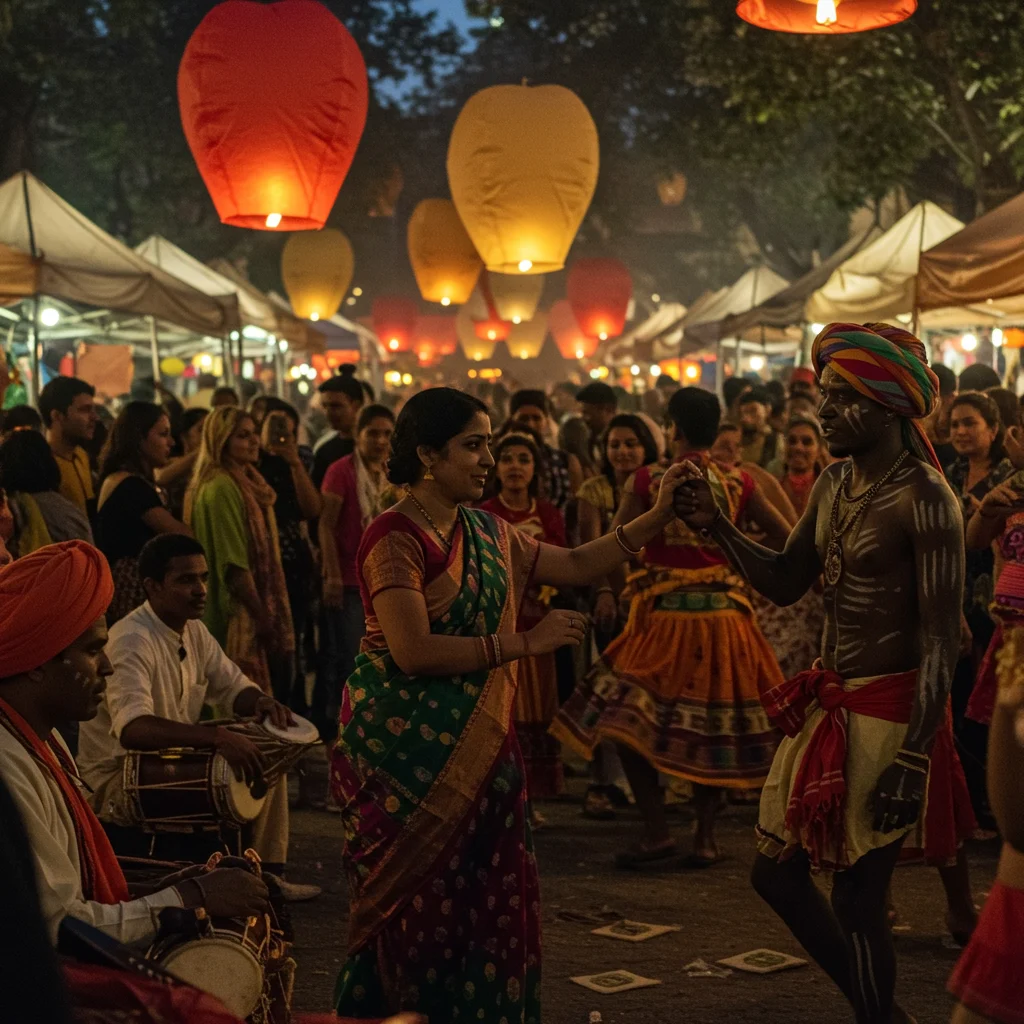
Temples and Sacred Sites in Bali
Famed for dramatic cliffside and lakeside temples, Bali’s Uluwatu, Tanah Lot, and Besakih temples are essential stops for spiritual seekers and photographers alike.
Temples and Sacred Sites in Thailand
Thailand is dotted with golden temples, including Wat Pho, Wat Arun, and the White Temple (Wat Rong Khun) in Chiang Rai. Dress modestly and observe local customs when visiting.
Yoga, Meditation, and Wellness Retreats
Bali is globally recognized for its wellness retreats, especially in Ubud, where yoga, meditation, and holistic treatments are widely available. Thailand also offers wellness centers and meditation retreats, particularly in Chiang Mai and Koh Samui.
Shopping and Souvenirs
Shopping is an adventure in itself, with bustling markets, artisan crafts, and unique souvenirs in both Bali and Thailand.

Markets and Shopping Streets in Bali
Bali features vibrant markets in Ubud, Seminyak, and Kuta, selling handicrafts, batik, jewelry, and homewares. Bargaining is expected, so enjoy the friendly negotiations.
Markets and Shopping Streets in Thailand
Thailand is famous for its night markets, floating markets, and street vendors. Chiang Mai’s Sunday Night Market and Bangkok’s Chatuchak Weekend Market are especially popular.
What Souvenirs Should You Buy?
Popular souvenirs from Bali include silver jewelry, wood carvings, and sarongs. In Thailand, look for silk scarves, handmade ceramics, and herbal spa products.
Family-Friendly Travel: Which Is Better for Kids?
Traveling with children is rewarding in both destinations. Each offers family-friendly attractions, activities, and accommodations to suit all ages.
Best Activities for Families in Bali
Families can enjoy water parks, animal encounters at Bali Zoo, and cultural workshops. The beaches are safe for swimming, and gentle hikes are suitable for young adventurers.
Best Activities for Families in Thailand
Thailand offers elephant sanctuaries, island hopping, and interactive museums. Cities like Bangkok and Chiang Mai feature kid-friendly attractions such as aquariums and theme parks.
Romantic and Couples’ Getaways
For couples, both Bali and Thailand create unforgettable settings for romance, honeymoons, and anniversaries.

Honeymoon Experiences in Bali
Bali is synonymous with romance, offering private pool villas, sunset dinners, and spa treatments in lush tropical settings. The island’s natural beauty provides a dreamy backdrop for special occasions.
Honeymoon Experiences in Thailand
Thailand entices couples with luxury resorts on secluded islands, candlelit beach dinners, and adventures like snorkeling or hot air balloon rides over the countryside.
Solo Travel: Which Is More Suitable?
Both Bali and Thailand are popular among solo travelers thanks to their safety, welcoming locals, and vibrant communities.
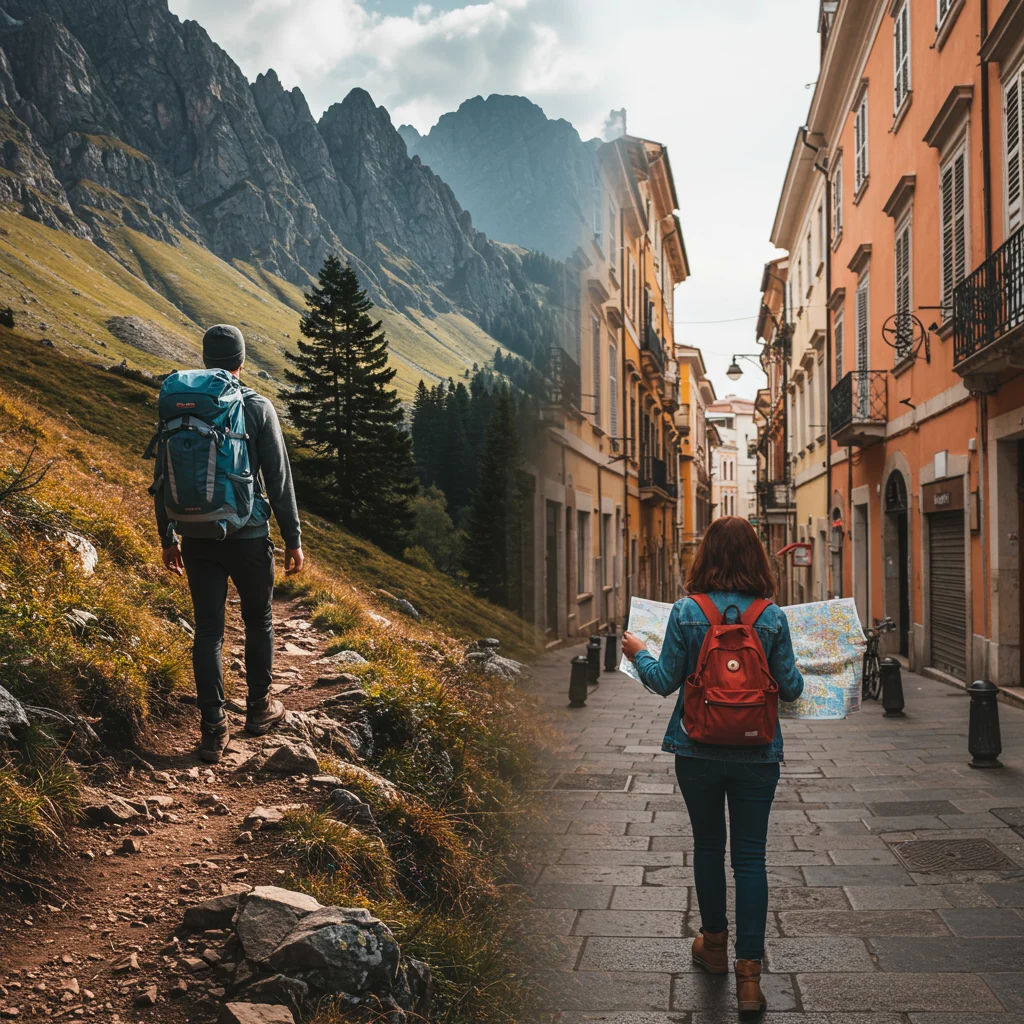
Meeting Other Travelers and Making Friends
Hostels, group tours, and communal spaces make it easy to connect with fellow travelers. Yoga studios in Bali and backpacker hubs in Thailand foster a social atmosphere for solo adventurers.
Digital Nomads and Remote Work
The rise of remote work has made Bali and Thailand hotspots for digital nomads seeking reliable internet, coworking spaces, and a supportive community.

Coworking Spaces and Internet Connectivity in Bali
Ubud, Canggu, and Seminyak offer a variety of coworking spaces with fast Wi-Fi, networking events, and scenic work environments. Cafes cater to remote workers with comfortable seating and international menus.
Coworking Spaces and Internet Connectivity in Thailand
Bangkok and Chiang Mai are digital nomad favorites, boasting affordable living, reliable internet, and a range of coworking hubs. The community is active, with regular meetups and workshops.
Long-Term Stay Options
Both destinations offer long-term rentals, visa options for extended stays, and a supportive expat scene. Monthly accommodation rates can be negotiated, especially outside peak season.
Sustainability and Responsible Tourism
As travel grows, so does the importance of responsible tourism. Both Bali and Thailand are making strides toward sustainability, with eco-friendly initiatives and opportunities to give back.

Eco-Friendly Accommodation and Initiatives
Eco-resorts, waste reduction programs, and community-based tourism projects are increasingly available. In Bali, many retreats focus on organic food and conservation, while Thailand promotes wildlife protection and green practices.
Volunteering and Giving Back
Travelers can participate in beach clean-ups, teaching programs, and conservation projects. These experiences foster deeper connections and positive impact on the local environment and communities.
As experts often say:
“The most meaningful journeys are those that not only change us, but also benefit the places and people we visit.”
Accessibility for Travelers with Disabilities
Accessibility varies in both destinations, and planning ahead is crucial for travelers with mobility or sensory needs.
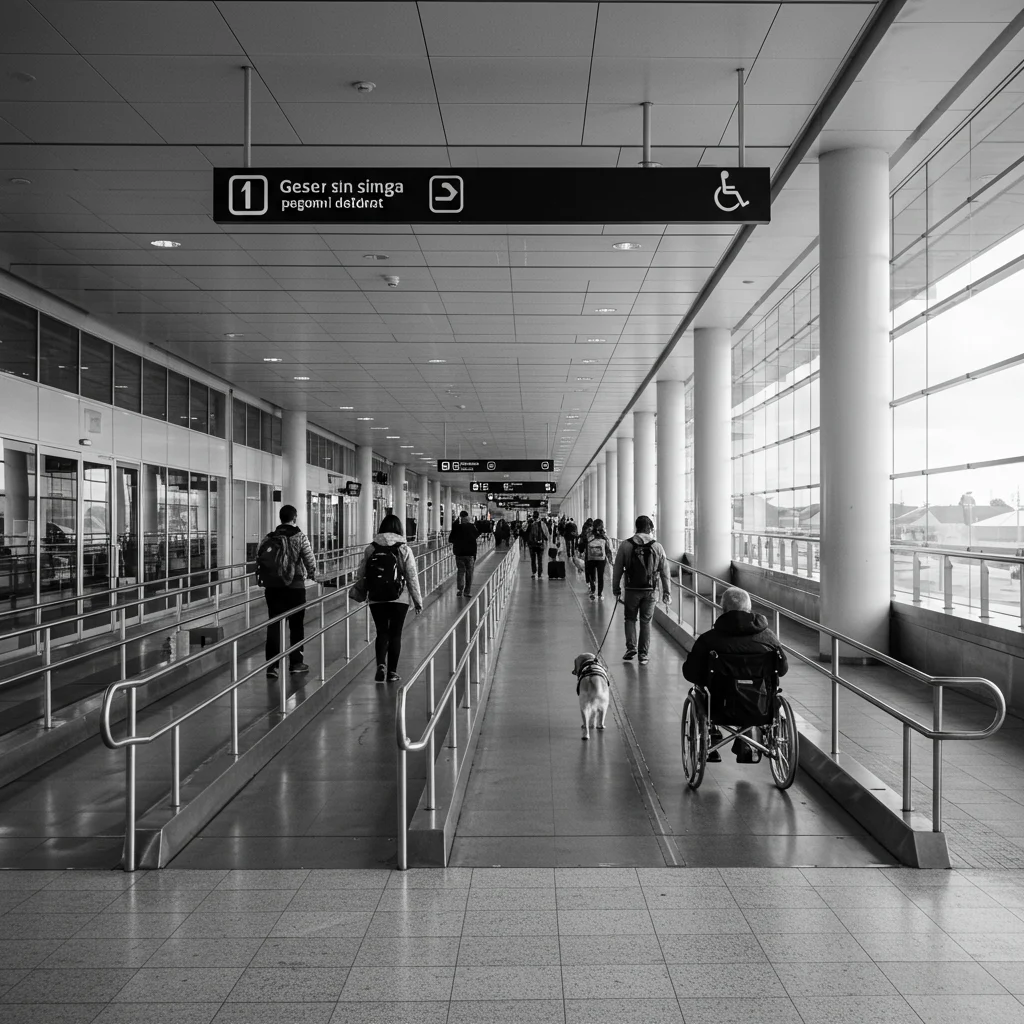
Facilities and Support in Bali
Major hotels and resorts in Bali offer accessible rooms and amenities, but infrastructure outside tourist areas may be limited. It is advisable to contact accommodations in advance to confirm facilities.
Facilities and Support in Thailand
Thailand is improving accessibility in public spaces, especially in Bangkok and major resorts. Sidewalks, transportation, and attractions are becoming more wheelchair-friendly, though challenges remain in rural areas.
Pros and Cons: Bali vs Thailand
Weighing the advantages and disadvantages can clarify your choice:
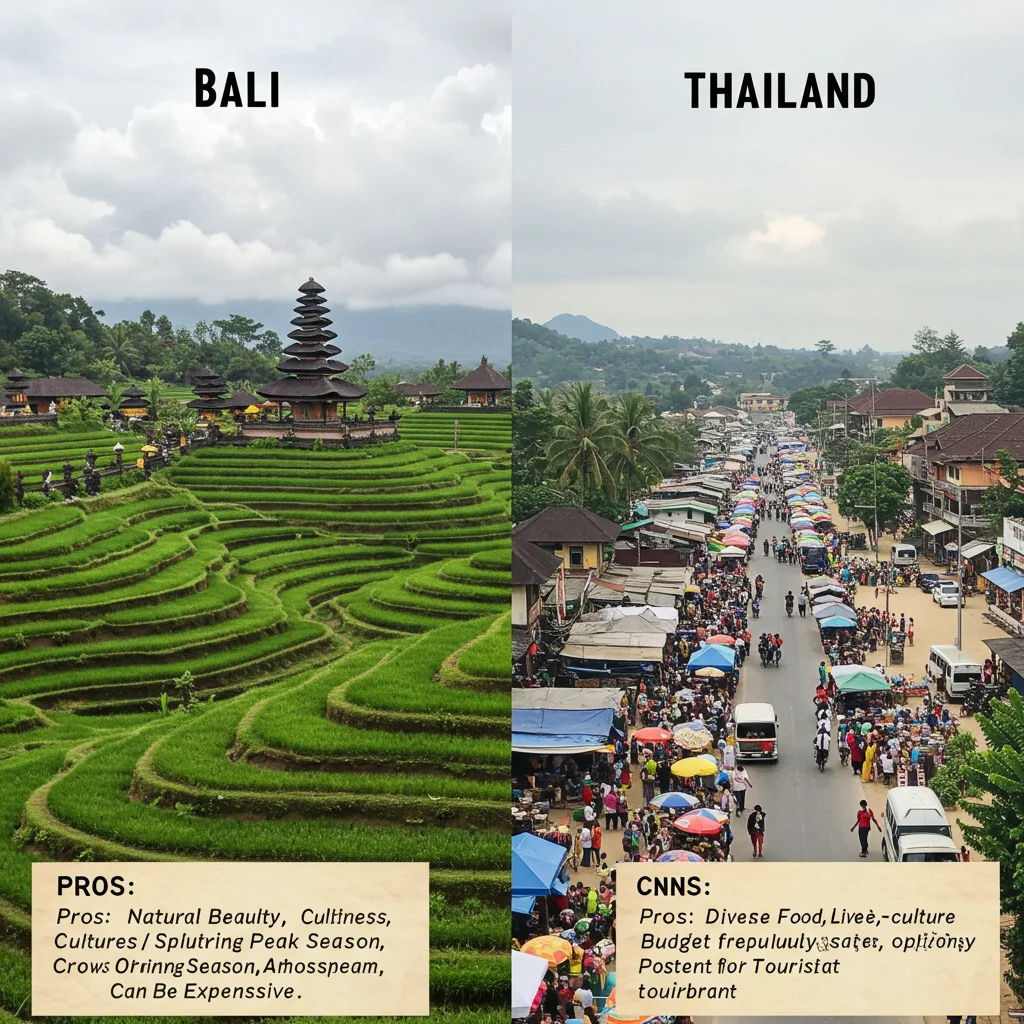
- Bali Pros: Unique culture, spiritual ambiance, luxury at affordable prices, world-class surfing
- Bali Cons: Limited public transport, heavy traffic, crowded during peak season
- Thailand Pros: Diverse landscapes, excellent food, extensive transport network, vibrant nightlife
- Thailand Cons: Some areas are highly commercialized, language barriers in rural regions
Who Should Choose Bali?
Bali is ideal for travelers seeking spiritual retreats, scenic landscapes, and a blend of culture and relaxation. Yoga enthusiasts, honeymooners, and surfers will find it especially appealing.

Who Should Choose Thailand?
Thailand suits those looking for variety—urban excitement, historic sites, culinary adventures, and island-hopping. Budget travelers, foodies, and families will appreciate its diversity and accessibility.
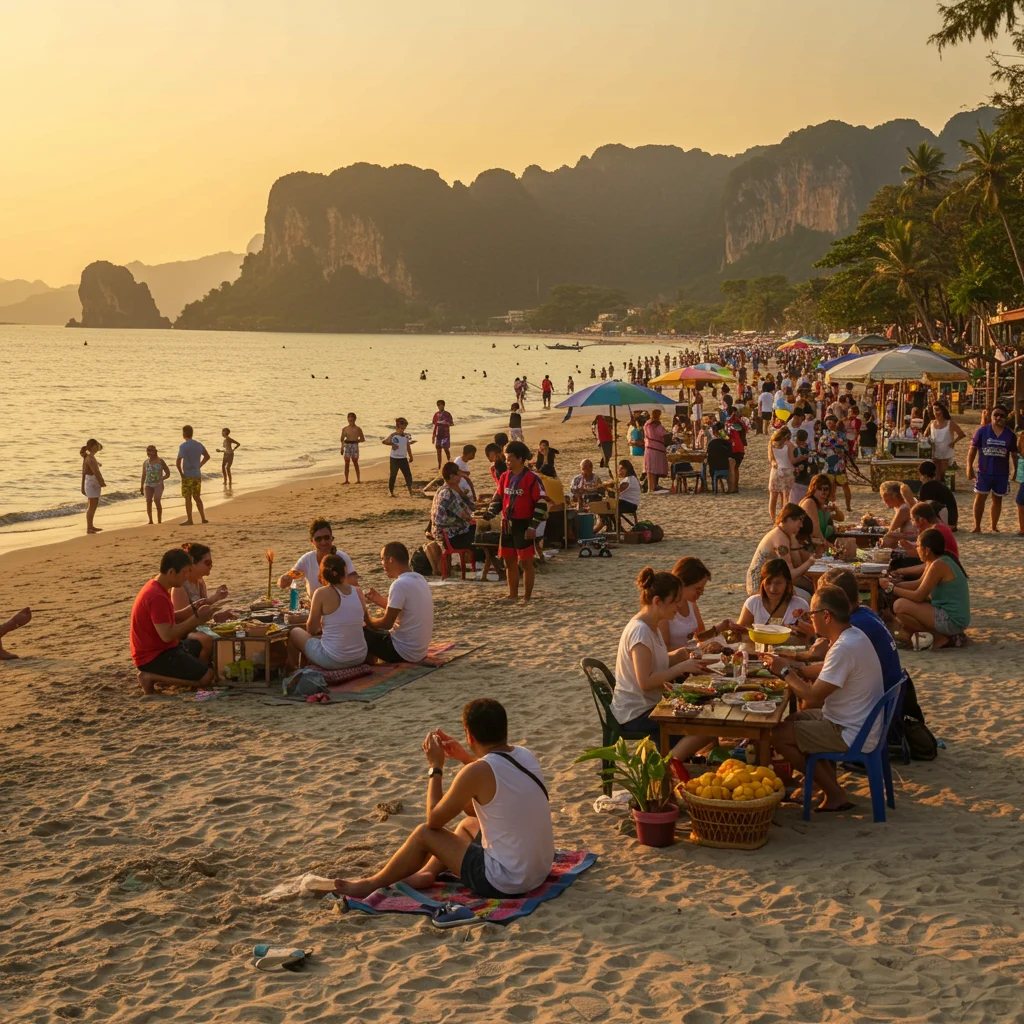
Frequently Asked Questions
Q: Is Bali or Thailand better for first-time travelers to Asia?
A: Both are excellent, but Thailand’s transport network and English proficiency make it slightly easier for beginners.

Q: Which destination is more affordable?
A: Thailand generally offers more budget options, especially for food and transport.
Q: Can I visit both Bali and Thailand in one trip?
A: Yes, but allow sufficient time for travel between the two, as flights are required.
Final Verdict: Bali or Thailand – Which One Wins?
There is no single winner—your ideal destination depends on your interests, travel style, and priorities. Both Bali and Thailand deliver extraordinary experiences, from serene temples to lively night markets, and from lush jungles to idyllic beaches.
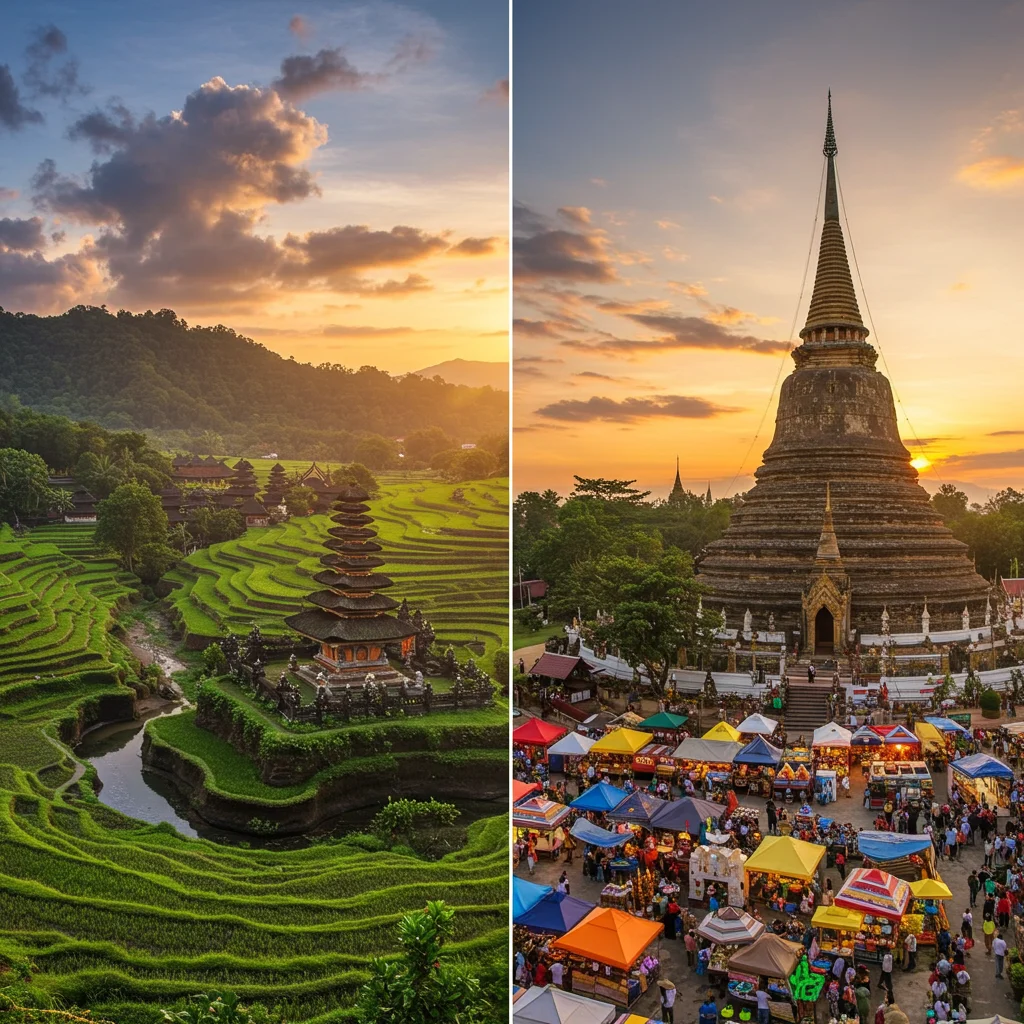
How to Book on Viator
Booking activities, tours, and unique experiences is seamless with Viator. Simply visit their website, search for your desired destination or activity, and review verified user ratings. Secure payment options and instant confirmations make planning your trip stress-free. Whether you want to find tours in Bali or plan your trip to Thailand, Viator offers a wide selection to suit every interest.

Conclusion: Making Your Choice
Ultimately, both Bali and Thailand offer endless opportunities for adventure, relaxation, and cultural enrichment. Your decision should reflect your personal travel goals, desired pace, and preferred experiences. For more inspiration and tips, visit Unisho—your resource for expert travel advice and unforgettable journeys.

Disclaimer: This information is accurate to the best of our knowledge; however, there may be changes or mistakes. Please verify exact details on the Viator booking page.

